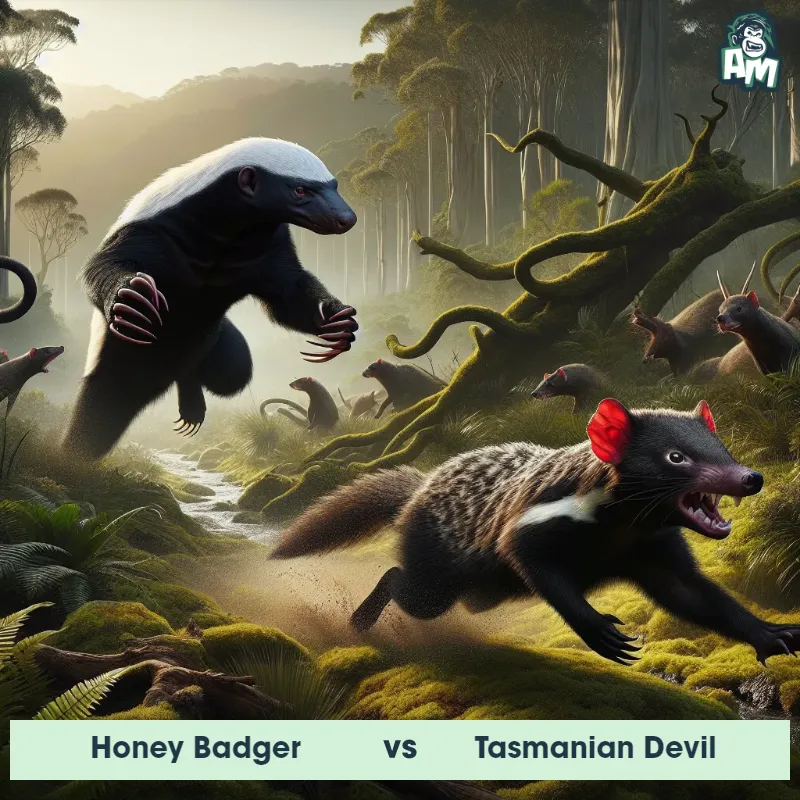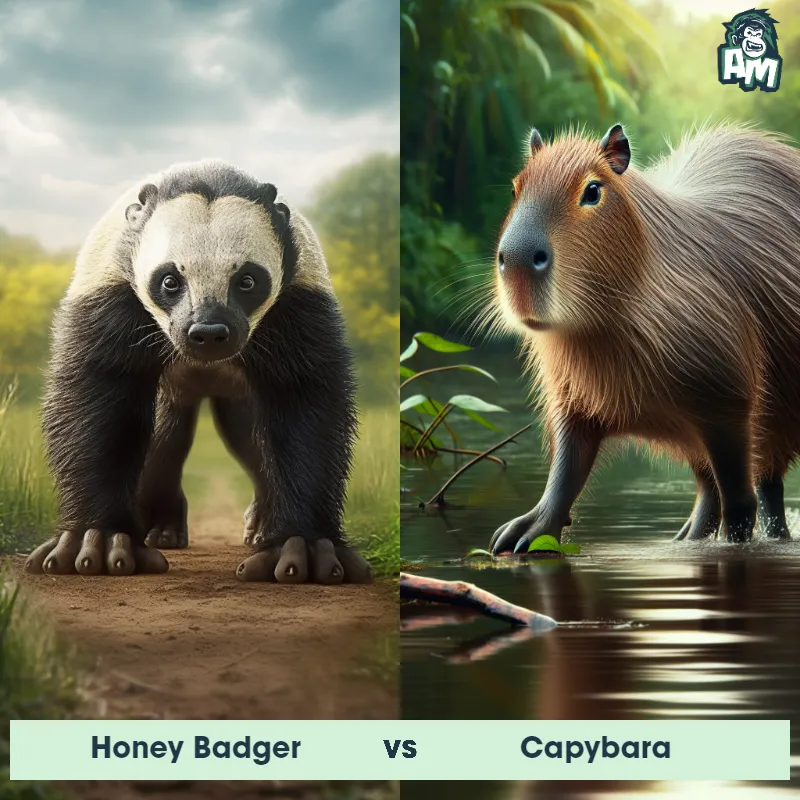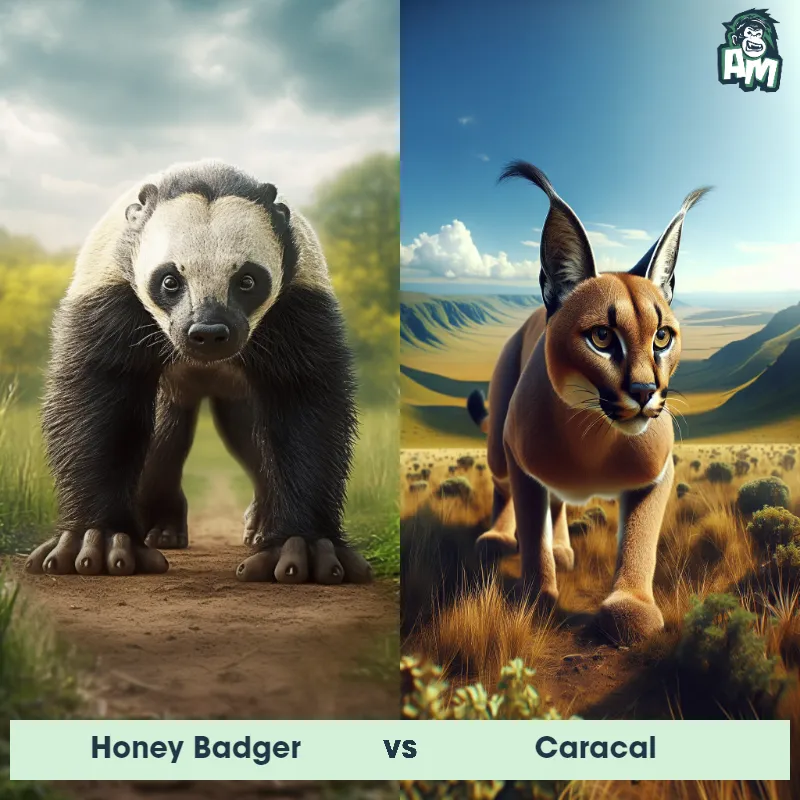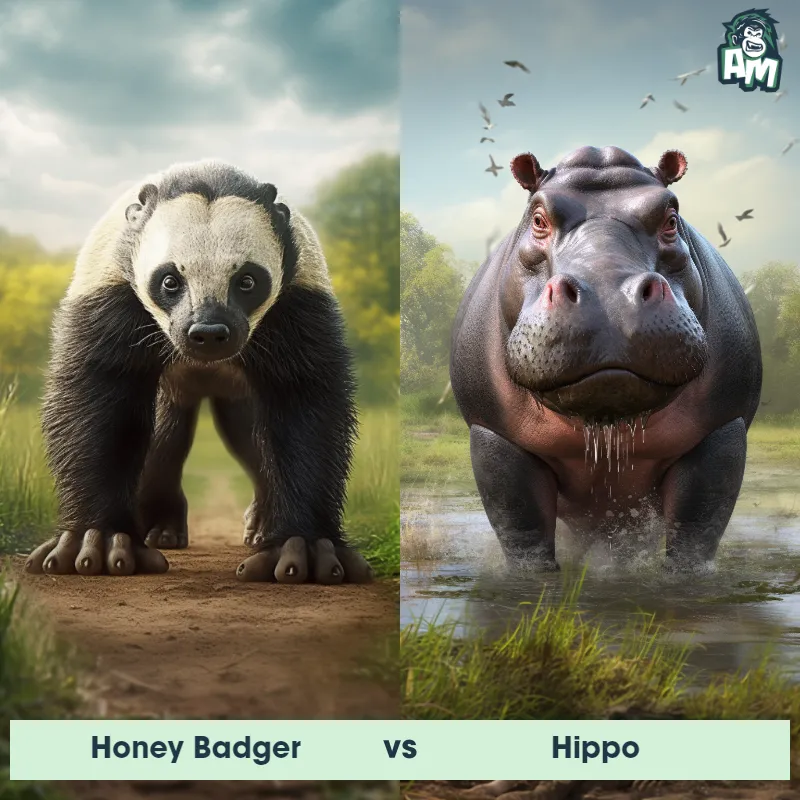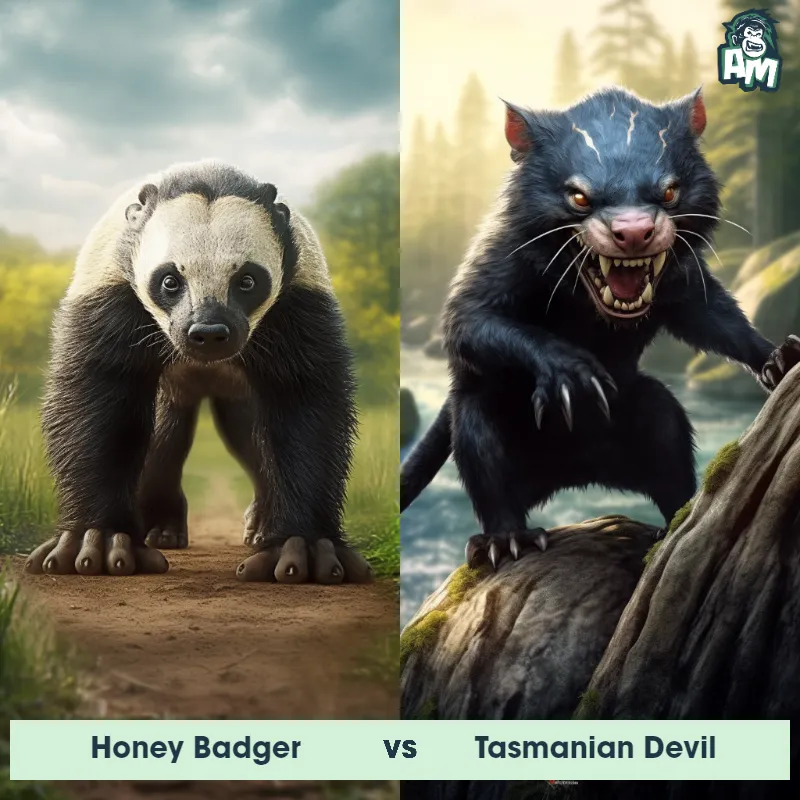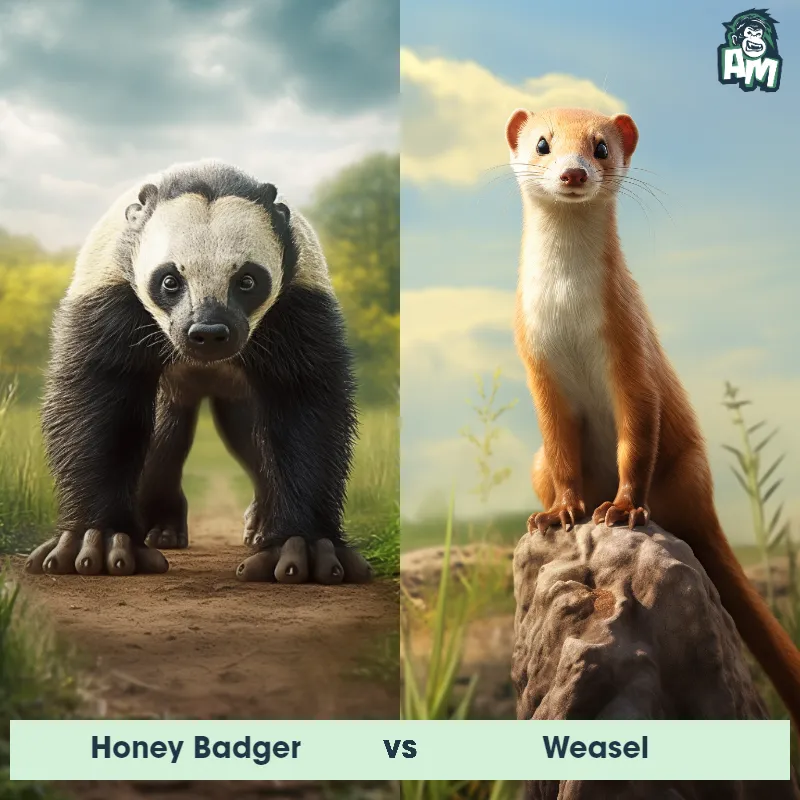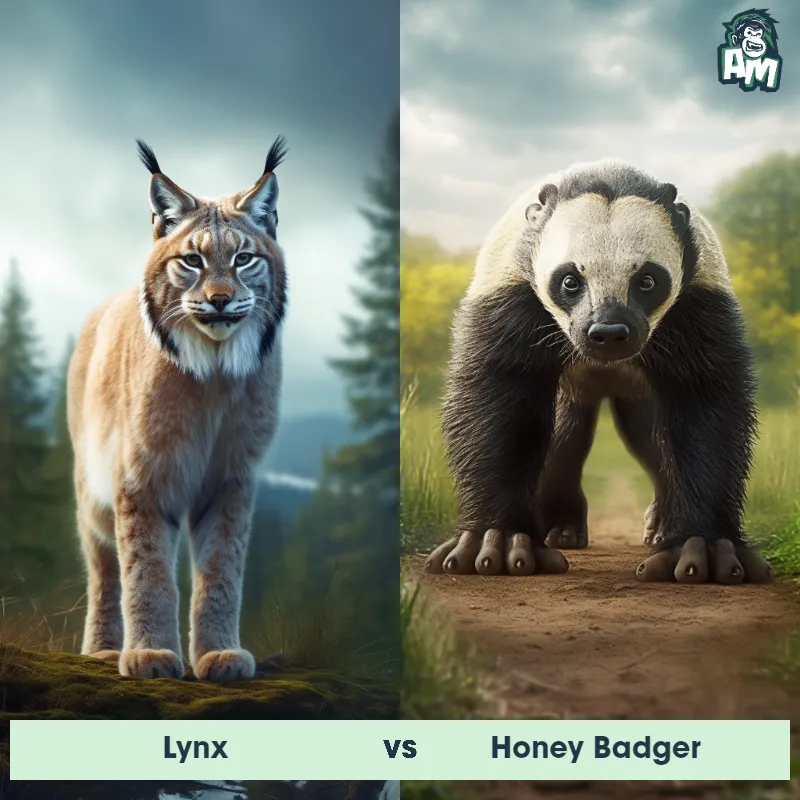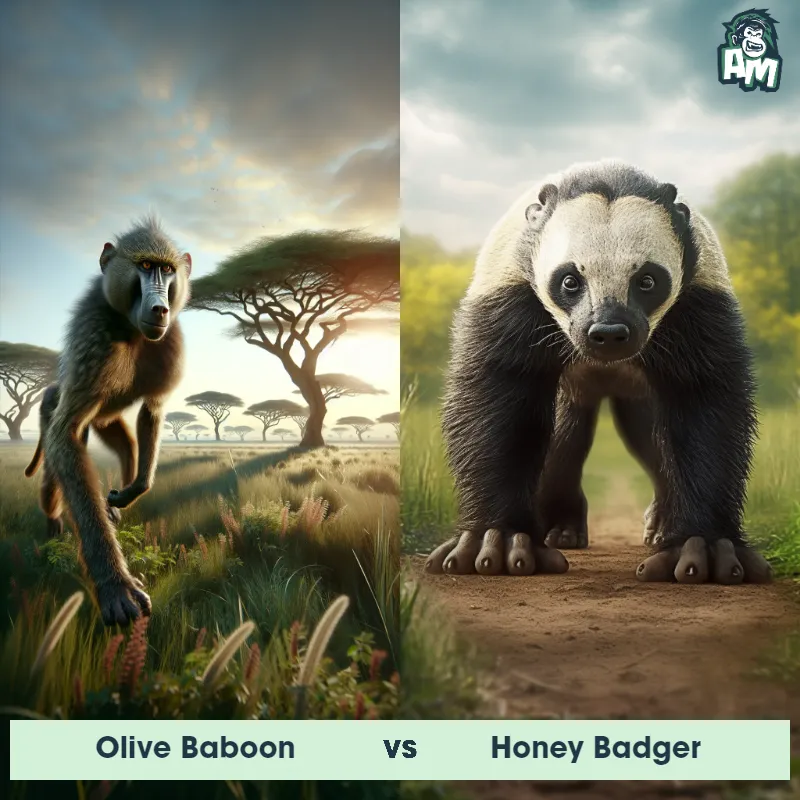The Honey Badger
The Honey Badger, also known as Mellivora capensis, is a small carnivorous mammal that is native to Africa, Southwest Asia, and the Indian subcontinent. Known for its tenacious and fearless nature, this compact creature measures about 23 inches in length and weighs approximately 30 pounds. It has a stocky build, with a wide head, short legs, and a thick hide that is remarkably tough and almost impervious to arrows and spears. The Honey Badger sports a coarse, grizzled coat that varies in color, ranging from light to dark shades of gray, with a distinctive black stripe running from its head to its tail. These highly adaptable omnivores boast a strong sense of smell and are renowned for their intelligence and problem-solving abilities, making them formidable hunters and scavengers across a wide range of habitats.

| Honey Badger | |
|---|---|
| Size | 25-30 inches (63-76 cm) in length |
| Weight | 19-26 pounds (9-12 kg) |
| Speed | Speed: 20 mph (32.19 km/hr) |
| Key Strength | Powerful jaws and sharp claws |
| Biggest Weakness | Short legs and small size |
| Scientific Name | Mellivora capensis |
| Family | Mustelidae |
| Habitat | Terrestrial |
| Geography | Africa, Southwest Asia, and the Indian subcontinent |
| Diet | Carnivorous, eats small mammals, birds, reptiles, insects, and honey |
| Lifespan | 24 years - 26 years |

The Honey Badger
The Honey Badger, also known as Mellivora capensis, is a small carnivorous mammal that is native to Africa, Southwest Asia, and the Indian subcontinent. Known for its tenacious and fearless nature, this compact creature measures about 23 inches in length and weighs approximately 30 pounds. It has a stocky build, with a wide head, short legs, and a thick hide that is remarkably tough and almost impervious to arrows and spears. The Honey Badger sports a coarse, grizzled coat that varies in color, ranging from light to dark shades of gray, with a distinctive black stripe running from its head to its tail. These highly adaptable omnivores boast a strong sense of smell and are renowned for their intelligence and problem-solving abilities, making them formidable hunters and scavengers across a wide range of habitats.
Fun Fact: One fascinating aspect of the Honey Badger's behavior is its remarkable ability to resist venomous snake bites, as it has developed a unique immunity against snake venom, making it highly resistant to the lethal effects.
| Honey Badger | |
|---|---|
| Size | 25-30 inches (63-76 cm) in length |
| Weight | 19-26 pounds (9-12 kg) |
| Speed | Speed: 20 mph (32.19 km/hr) |
| Key Strength | Powerful jaws and sharp claws |
| Biggest Weakness | Short legs and small size |
| Scientific Name | Mellivora capensis |
| Family | Mustelidae |
| Habitat | Terrestrial |
| Geography | Africa, Southwest Asia, and the Indian subcontinent |
| Diet | Carnivorous, eats small mammals, birds, reptiles, insects, and honey |
| Lifespan | 24 years - 26 years |
Match Highlights
Honey Badger Matchups
We use AI to simulate matchups between the Honey Badger and other animals. Our simulation considers size, strength, and natural predatory behaviors to determine the most likely outcome.
Honey Badger: Diet, Predators, Aggression, and Defensive Behaviors
What do Honey Badgers eat?
Honey Badgers are omnivores and their diet consists of a wide variety of foods including insects, small mammals, birds, reptiles, fruits, and even bee larvae. They are known for their ability to attack beehives and steal honey, hence their name.
Do Honey Badgers have any predators?
Honey Badgers are apex predators in their habitat and are not typically preyed upon by other animals. However, they may occasionally fall victim to larger carnivores such as lions, leopards, and hyenas.
Are Honey Badgers aggressive?
Honey Badgers are known for their fearless and aggressive nature. They have been observed taking on animals much larger than themselves and will defend themselves vigorously when threatened.
Do Honey Badgers fight?
Honey Badgers are solitary animals but are highly territorial. They will engage in fierce battles with rivals over territory or mates, using their sharp claws and powerful jaws to fight.
How do Honey Badgers defend themselves?
Honey Badgers have several defensive mechanisms to protect themselves from predators. They have thick, loose skin that allows them to twist and turn to attack back, as well as a strong bite and sharp claws for fighting. They are also known for their ability to release a strong, musky odor from their anal glands to deter attackers.
What is the biggest weakness of Honey Badgers in a fight?
One weakness of Honey Badgers in a fight is their relatively small size compared to some of their potential predators. While they are strong and fearless, they can still be overpowered by much larger animals such as lions or hyenas. Additionally, their aggressive nature may sometimes lead them to take on fights that they cannot win.
Fun Fact: Despite its small size, the Honey Badger is regarded as one of the most ferocious animals in the animal kingdom, often fearlessly taking on larger predators such as lions, hyenas, and even crocodiles, using its sharp claws, powerful jaws, and thick hide to defend itself.
Fun Fact: The Honey Badger is an incredibly clever and resourceful creature, known for its problem-solving skills. When faced with obstacles such as tall fences or locked gates, they have been observed to use tools like sticks or rocks to overcome the barriers and escape.






